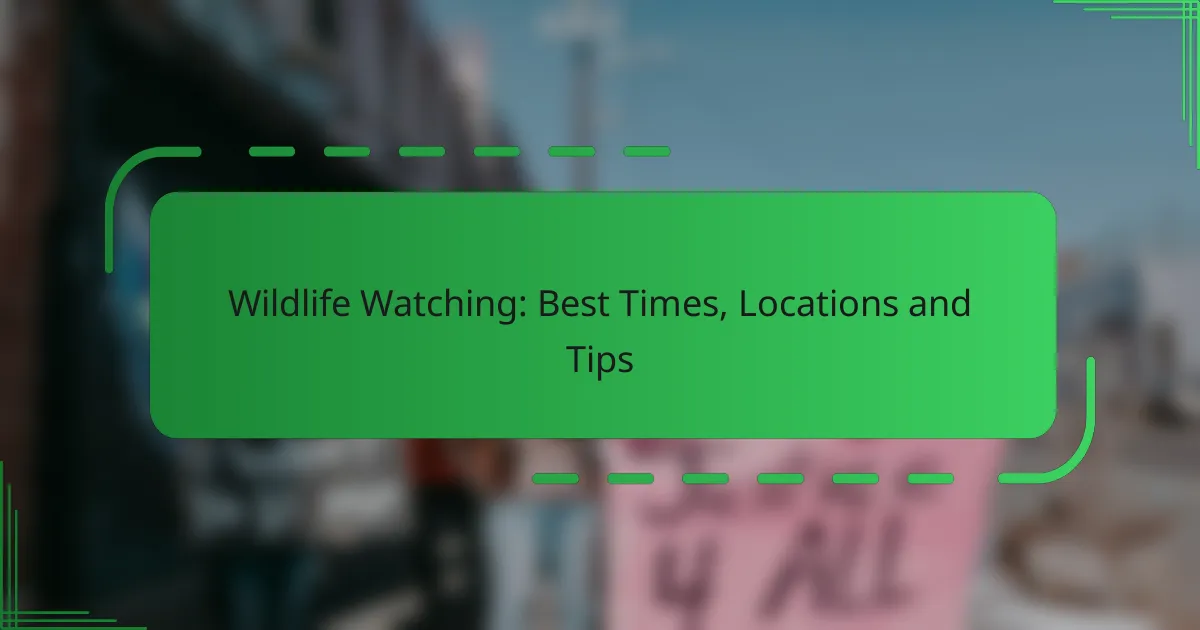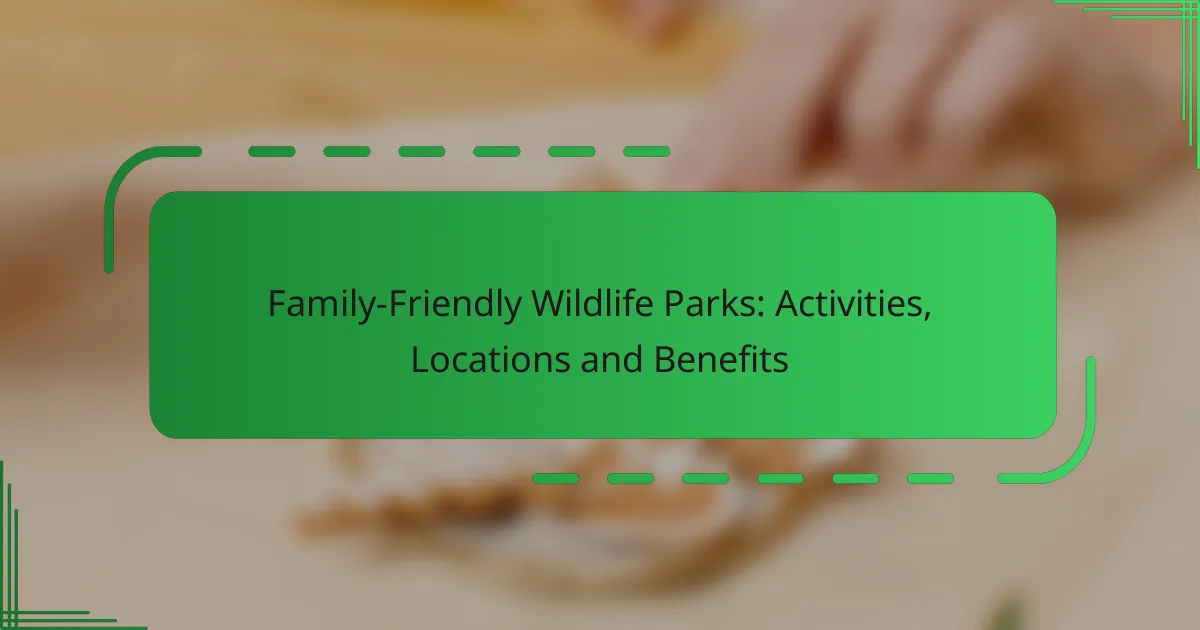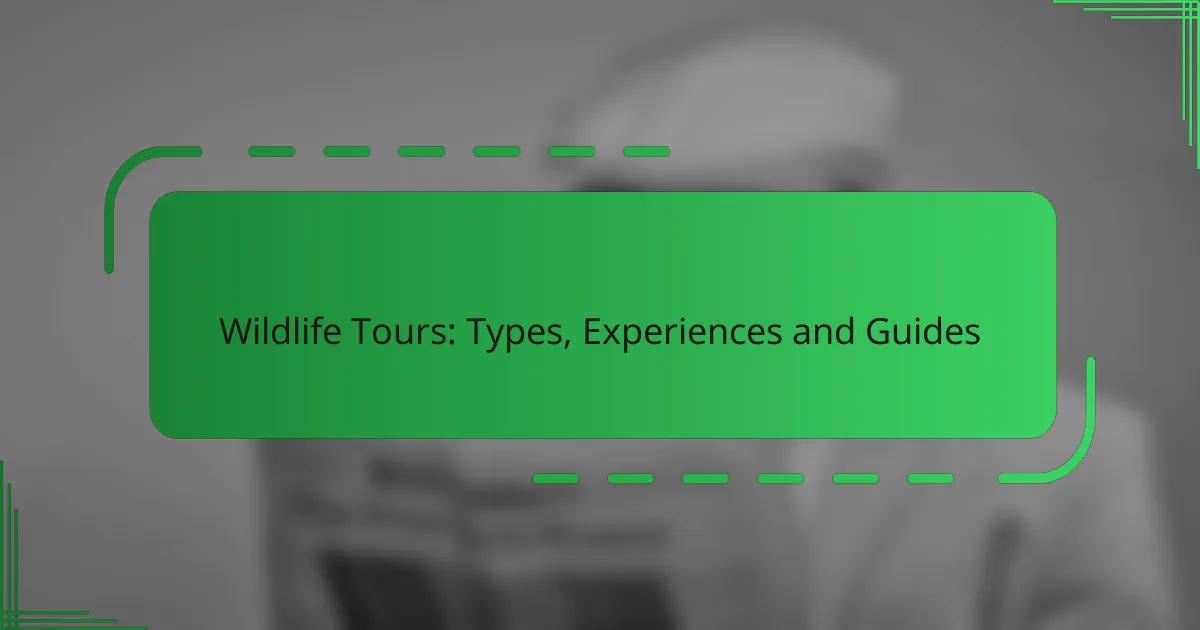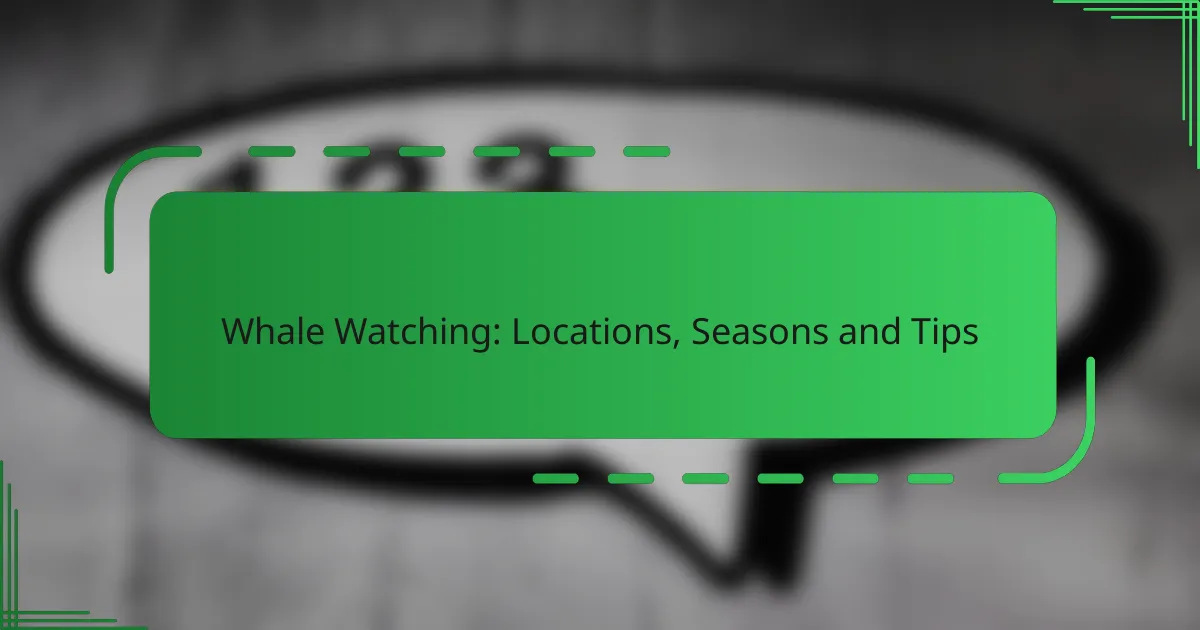Wildlife watching offers a thrilling opportunity to connect with nature and observe animals in their natural habitats. The best times for this activity are typically during spring and fall, with early mornings and late evenings providing optimal viewing conditions. Key locations such as Yellowstone, Everglades, and Denali National Parks are renowned for their diverse ecosystems and abundant wildlife. With the right preparation and techniques, you can enhance your experience and increase your chances of memorable encounters.

What are the best times for wildlife watching in North America?
The best times for wildlife watching in North America vary by season and time of day. Generally, spring and fall are prime seasons for observing migratory species, while early mornings and late evenings provide optimal conditions for spotting various animals.
Spring migration season
Spring migration season, typically from March to June, is an excellent time for wildlife watching as many birds and animals return from their winter habitats. During this period, you can witness a variety of species, including songbirds and waterfowl, as they travel north to breed.
To maximize your experience, consider visiting wetlands, forests, and coastal areas where migratory birds congregate. Bring binoculars and a field guide to help identify different species, and be prepared for varying weather conditions as spring can be unpredictable.
Fall migration season
Fall migration season, occurring from August to November, is another prime time for wildlife observation. Many animals, including birds and some mammals, begin their journey south to escape the colder temperatures. This season offers a chance to see large flocks of birds as they travel to their wintering grounds.
Key locations for fall migration include coastal regions, river valleys, and open fields. Look for organized birding events or guided tours to enhance your experience, and remember to dress in layers as temperatures can fluctuate significantly.
Early morning and late evening
Early morning and late evening are the best times of day for wildlife watching, as many animals are most active during these hours. Dawn and dusk provide cooler temperatures and lower human activity, making wildlife more likely to be seen.
When planning your outings, aim to arrive at your chosen location just before sunrise or a couple of hours before sunset. Use quiet movements and minimize noise to increase your chances of spotting animals. Always carry a flashlight for evening excursions, and consider using a camera with a good zoom lens to capture distant wildlife without disturbing them.
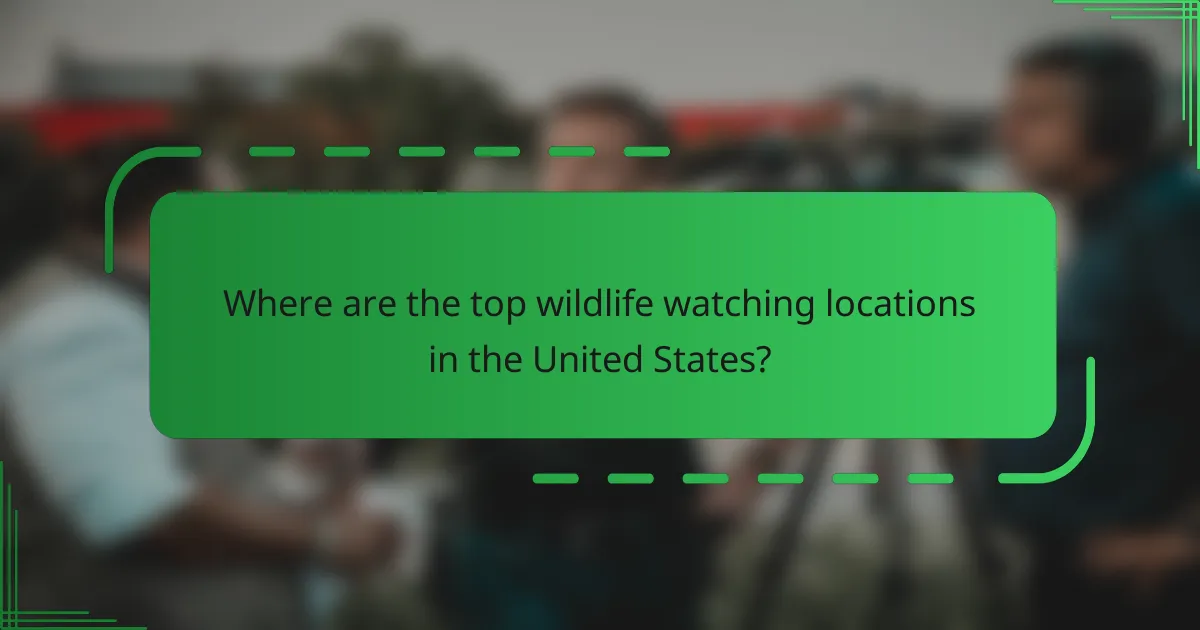
Where are the top wildlife watching locations in the United States?
The United States boasts several premier wildlife watching locations, each offering unique ecosystems and diverse species. Key destinations include Yellowstone National Park, Everglades National Park, and Denali National Park, where visitors can observe a variety of wildlife in their natural habitats.
Yellowstone National Park
Yellowstone National Park is renowned for its geothermal features and rich wildlife, including bison, elk, and wolves. The best times for wildlife viewing are early morning and late afternoon, particularly during spring and fall when animals are most active.
Visitors should consider taking guided tours or using park resources to locate wildlife hotspots. Remember to maintain a safe distance from animals and adhere to park regulations to protect both the wildlife and yourself.
Everglades National Park
Everglades National Park is a unique subtropical wilderness, home to a variety of species such as alligators, manatees, and numerous bird species. The dry season from November to April is ideal for wildlife watching, as animals congregate around water sources.
To enhance your experience, consider taking airboat tours or walking trails for closer encounters. Be mindful of the park’s guidelines regarding wildlife interactions and always respect the natural environment.
Denali National Park
Denali National Park offers breathtaking views and opportunities to see large mammals like grizzly bears, moose, and caribou. The summer months, particularly June to September, provide the best wildlife viewing conditions due to increased animal activity and accessibility within the park.
Utilize the park’s shuttle buses for efficient travel and to access prime viewing areas. Always carry binoculars for better observation and remember to keep a safe distance from wildlife to ensure both your safety and their well-being.

What tips enhance wildlife watching experiences?
Enhancing wildlife watching experiences involves a combination of preparation, technique, and respect for nature. By using the right tools, adopting a patient mindset, and understanding animal behavior, you can significantly increase your chances of observing wildlife in its natural habitat.
Use binoculars for better viewing
Binoculars are essential for wildlife watching, as they allow you to see animals from a distance without disturbing them. A pair with a magnification of 8x to 10x is generally ideal for most outdoor settings, providing a good balance between detail and stability.
When selecting binoculars, consider factors like weight and waterproofing, especially if you plan to hike or visit wet environments. A compact, lightweight model is easier to carry, while waterproof options ensure durability in various weather conditions.
Practice patience and silence
Patience and silence are crucial for successful wildlife observation. Animals are often skittish and will avoid areas with noise or movement, so remaining still and quiet can lead to more sightings. Allow time for wildlife to appear, as it may take several minutes or longer.
To improve your chances, find a comfortable spot and wait. Bring along a snack or a book to help pass the time quietly. Avoid sudden movements and speak softly if you are with others, as even hushed voices can alert nearby wildlife.
Research animal behavior
Understanding animal behavior is key to predicting where and when to find wildlife. Different species have specific habits, such as feeding times and migration patterns, which can vary by season. Researching these behaviors can help you plan your outings more effectively.
For example, many animals are more active during dawn and dusk, known as crepuscular activity. Knowing this can help you schedule your wildlife watching trips during these peak times for better chances of sightings. Additionally, familiarize yourself with local wildlife regulations and guidelines to ensure a respectful and safe experience.

What equipment is essential for wildlife watching?
Essential equipment for wildlife watching includes items that enhance your experience and increase your chances of observing animals in their natural habitats. Key tools like field guidebooks, cameras with zoom lenses, and appropriate clothing are vital for a successful outing.
Field guidebooks
Field guidebooks are invaluable for identifying species and understanding their behaviors. These books often include illustrations, descriptions, and habitat information, making them a practical resource for both novice and experienced wildlife watchers.
When selecting a field guide, choose one that focuses on the specific region you plan to visit, as this will provide the most relevant information. Many guides are available in both print and digital formats, allowing for easy access in the field.
Camera with zoom lens
A camera with a zoom lens is crucial for capturing distant wildlife without disturbing them. Look for a camera that offers a zoom range of at least 200mm to 300mm, which allows for clear images of animals from a safe distance.
Consider investing in a tripod or stabilizer to reduce shake, especially in low-light conditions. Additionally, familiarize yourself with your camera settings to quickly adjust for varying light and movement, ensuring you don’t miss any moments.
Comfortable clothing and footwear
Wearing comfortable clothing and footwear is essential for enjoying long hours outdoors while wildlife watching. Choose moisture-wicking fabrics and layers that can adapt to changing weather conditions, as temperatures can vary significantly throughout the day.
Sturdy, supportive footwear is important for navigating uneven terrain. Waterproof boots can be beneficial if you plan to explore wet or muddy areas. Always check the weather forecast and dress accordingly to ensure a pleasant experience.

How to choose the right wildlife watching tour?
Choosing the right wildlife watching tour involves evaluating the operator’s reputation, the size of the group, and the overall experience offered. Prioritizing these factors ensures a fulfilling and safe wildlife observation experience.
Check reviews of tour operators
Reviews of tour operators provide insights into their reliability and the quality of their tours. Look for feedback on platforms like TripAdvisor or Google Reviews, focusing on comments about wildlife sightings, guide expertise, and customer service.
Pay attention to the overall rating and the number of reviews. A well-reviewed operator with hundreds of positive ratings is generally a safer bet than one with just a few reviews, even if they are all positive.
Assess group size and experience
The size of the group can significantly impact your wildlife watching experience. Smaller groups often allow for more personalized attention from guides and better opportunities for wildlife encounters, while larger groups may lead to a less intimate experience.
Consider the experience level of the guides as well. Operators with knowledgeable guides who are familiar with local wildlife behaviors can enhance your understanding and enjoyment of the tour. Look for operators that emphasize their guides’ training and experience in wildlife observation.
